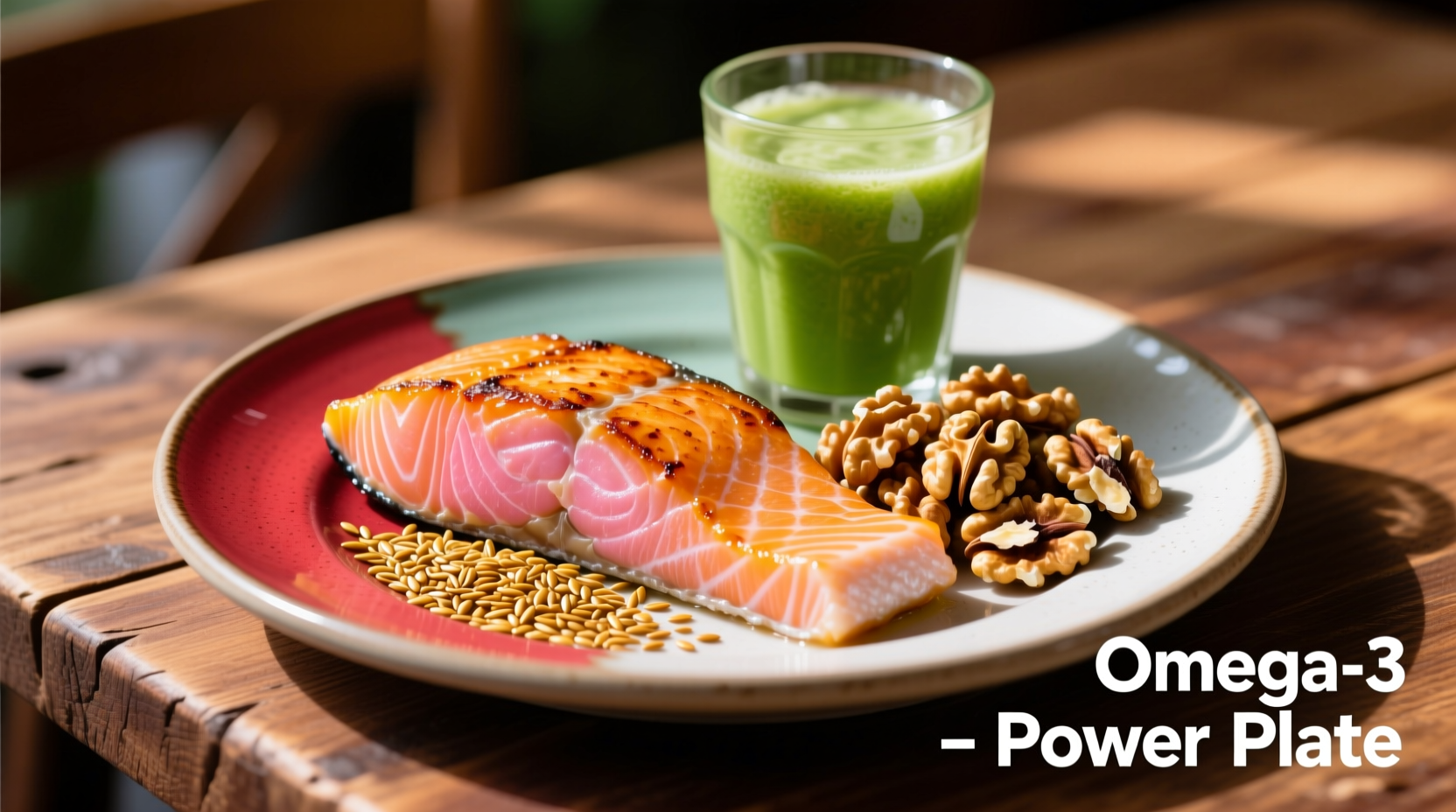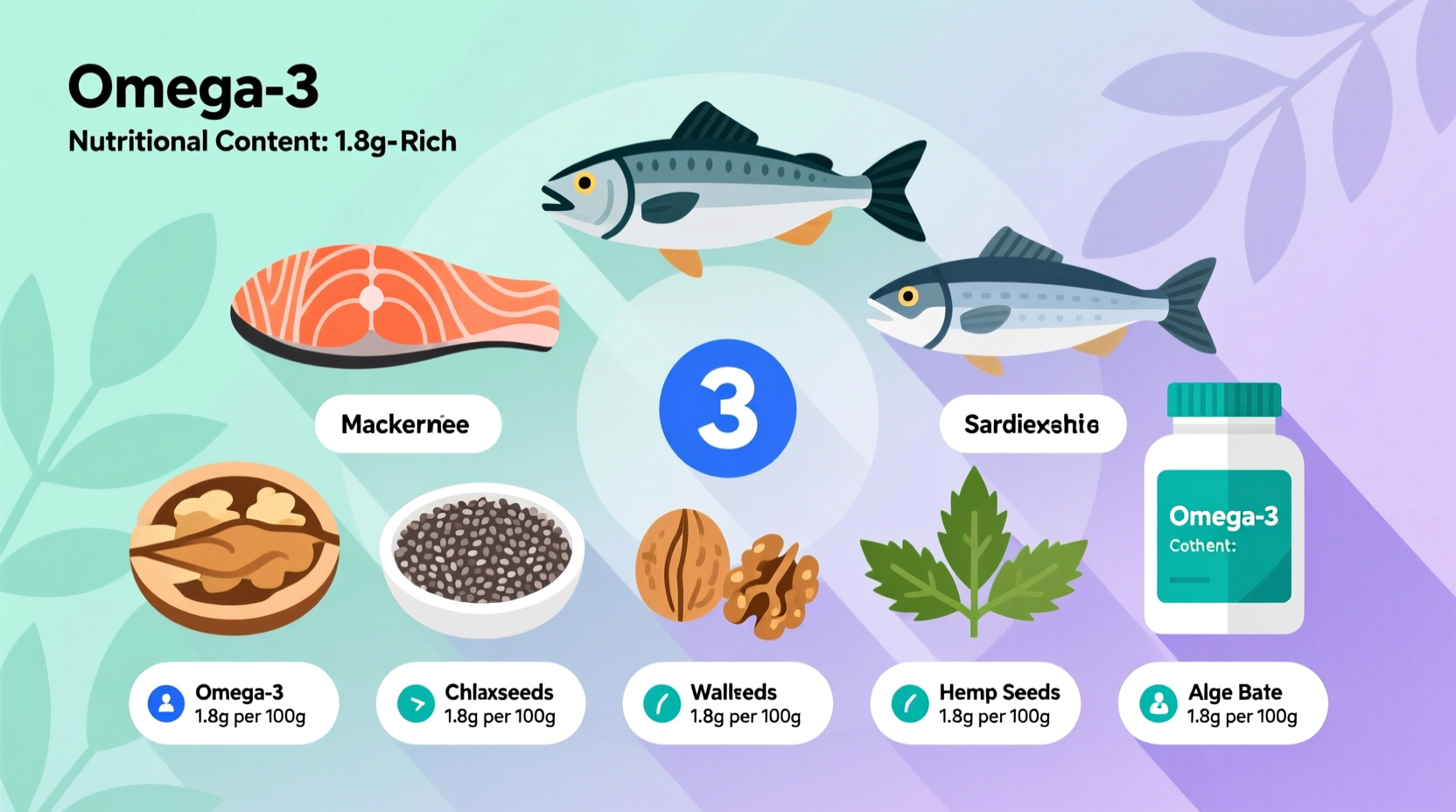Discover exactly which foods deliver these crucial nutrients and how to incorporate them into your daily meals for optimal health benefits. This comprehensive guide cuts through the confusion with science-backed information you can trust.
Your Complete Guide to Omega-3 Food Sources
Omega-3 fatty acids represent one of the most researched nutrients in modern nutrition science. These essential fats play critical roles in brain function, reducing inflammation, and maintaining heart health. Since your body can't produce them, getting adequate omega-3s through your diet is crucial for overall wellbeing.
Understanding the Three Types of Omega-3s
Not all omega-3s are created equal. The three primary types serve different functions in your body:
- ALA (Alpha-Linolenic Acid) - Plant-based omega-3 found in seeds and nuts. Your body must convert ALA to EPA and DHA, but this process is inefficient (only 5-10% conversion rate)
- EPA (Eicosapentaenoic Acid) - Directly supports heart and mental health, primarily found in marine sources
- DHA (Docosahexaenoic Acid) - Critical for brain development and function, with the highest concentrations in fatty fish and algae
According to the National Institutes of Health Office of Dietary Supplements, adults should consume 1.1 grams daily for women and 1.6 grams for men of ALA, while EPA and DHA recommendations range from 250-500mg combined for general health maintenance.

Top Food Sources Ranked by Omega-3 Content
| Food Source | Omega-3 Type | Amount Per Serving | Weekly Recommendation |
|---|---|---|---|
| Mackerel (Atlantic, cooked) | EPA/DHA | 5,134 mg per 3.5 oz | 1-2 servings |
| Salmon (wild, cooked) | EPA/DHA | 1,716-1,984 mg per 3.5 oz | 2-3 servings |
| Herring (Atlantic, cooked) | EPA/DHA | 1,729 mg per 3.5 oz | 2 servings |
| Flaxseeds (ground) | ALA | 2,350 mg per tablespoon | Daily inclusion |
| Chia seeds | ALA | 1,797 mg per tablespoon | Daily inclusion |
| Walnuts | ALA | 2,570 mg per ounce (14 halves) | Daily inclusion |
| Algal oil supplements | DHA/EPA | 200-300 mg per capsule | As directed |
Animal-Based Omega-3 Powerhouses
Fatty fish represent the most efficient way to obtain EPA and DHA omega-3s. Wild-caught varieties typically contain higher concentrations than farm-raised alternatives. The American Heart Association recommends consuming at least two 3.5-ounce servings of fatty fish weekly for optimal heart health benefits.
For those concerned about mercury content, smaller fish like sardines and anchovies provide excellent omega-3 benefits with minimal contamination risk. These fish occupy lower positions in the food chain, accumulating fewer toxins while remaining exceptionally rich in beneficial fats.
Plant-Based Omega-3 Options for Vegetarians and Vegans
Plant sources provide ALA omega-3s that require conversion to EPA and DHA. While this conversion process is inefficient, consistent consumption of ALA-rich foods still delivers significant health benefits. Ground flaxseeds offer better absorption than whole seeds due to their tough outer shell.
Recent research published in the American Journal of Clinical Nutrition indicates that regularly consuming algae-based supplements provides a direct source of DHA and EPA for plant-based eaters, bypassing the inefficient conversion process required with other plant sources.
Practical Tips for Maximizing Omega-3 Benefits
Simply adding omega-3 rich foods isn't enough—you need to optimize absorption and prevent degradation:
- Store seeds properly - Keep flaxseeds and chia seeds in airtight containers in the refrigerator to prevent oxidation
- Grind seeds before use - Whole flaxseeds often pass through your system undigested
- Balance omega-6 intake - High omega-6 consumption (from processed foods) reduces omega-3 effectiveness
- Cook fish gently - Bake or poach instead of high-heat frying to preserve delicate fats
- Pair with vitamin E - Add leafy greens or almonds to meals to protect omega-3s from oxidation
Special Considerations for Different Life Stages
Your omega-3 needs change throughout life. Pregnant women require additional DHA for fetal brain development, with recommendations increasing to 300mg daily of DHA according to the National Center for Biotechnology Information. Older adults may benefit from higher intake to support cognitive function, while children need adequate omega-3s for proper neurological development.
Individuals with certain health conditions like inflammatory disorders may require higher therapeutic doses under medical supervision. Always consult with a healthcare provider before significantly increasing omega-3 intake, especially if taking blood-thinning medications.
Common Omega-3 Myths Debunked
Despite widespread awareness of omega-3 benefits, several misconceptions persist:
- Myth: All fish oil supplements are equally effective
Fact: Concentration and purity vary significantly between products—look for third-party tested supplements - Myth: Plant-based omega-3s provide equivalent benefits to marine sources
Fact: Conversion rates from ALA to EPA/DHA are low (5-10%), making direct marine sources more efficient - Myth: You need expensive supplements to get enough omega-3s
Fact: Consistent dietary sources like fatty fish, walnuts, and flaxseeds can meet requirements for most people
Putting It All Together: Your Omega-3 Action Plan
Creating an effective omega-3 strategy requires understanding your personal needs and preferences:
- Assess your current intake by tracking foods consumed over one week
- Determine which omega-3 type you need most (ALA, EPA, or DHA)
- Select appropriate food sources based on dietary preferences and restrictions
- Incorporate omega-3 rich foods into regular meal planning
- Monitor how you feel after consistent consumption for 4-6 weeks
Remember that consistency matters more than perfection. Adding just one extra serving of fatty fish weekly or incorporating a tablespoon of ground flaxseed into your morning routine creates meaningful progress toward optimal omega-3 status.











 浙公网安备
33010002000092号
浙公网安备
33010002000092号 浙B2-20120091-4
浙B2-20120091-4